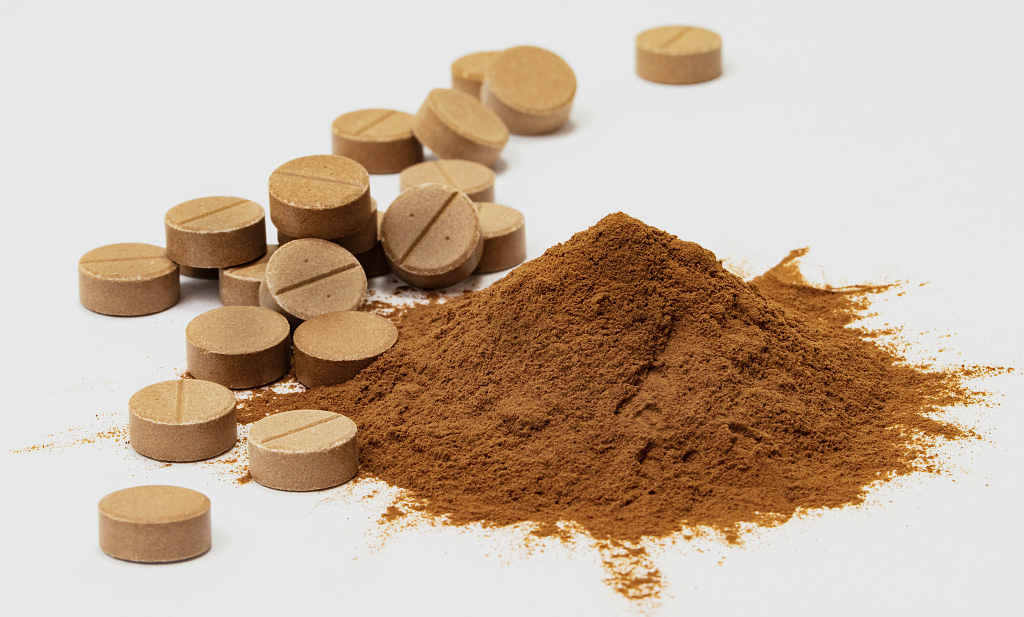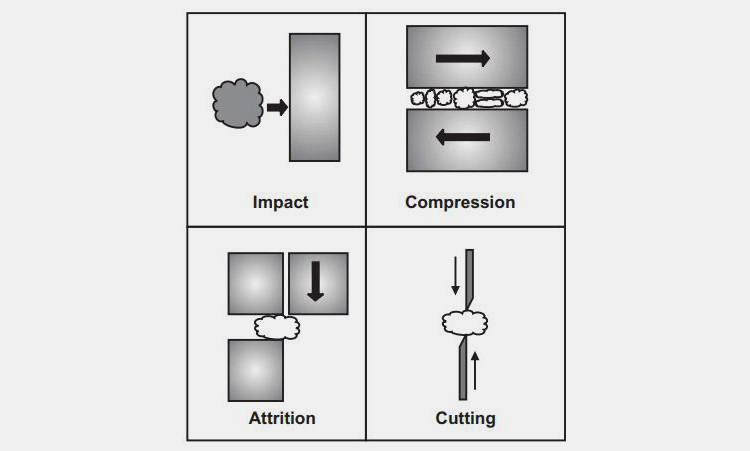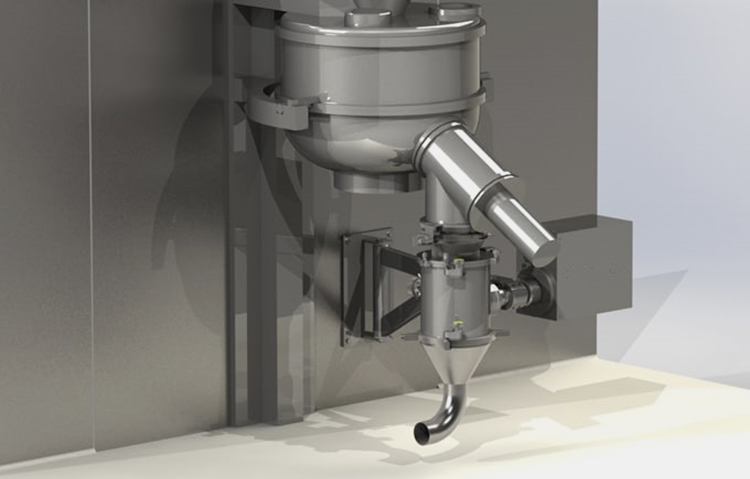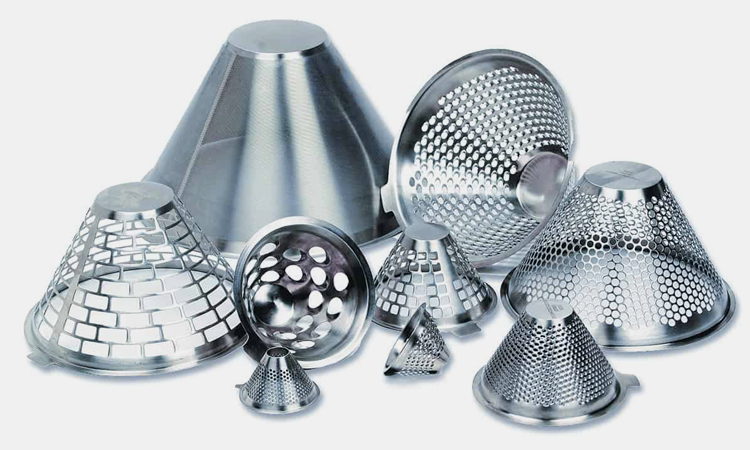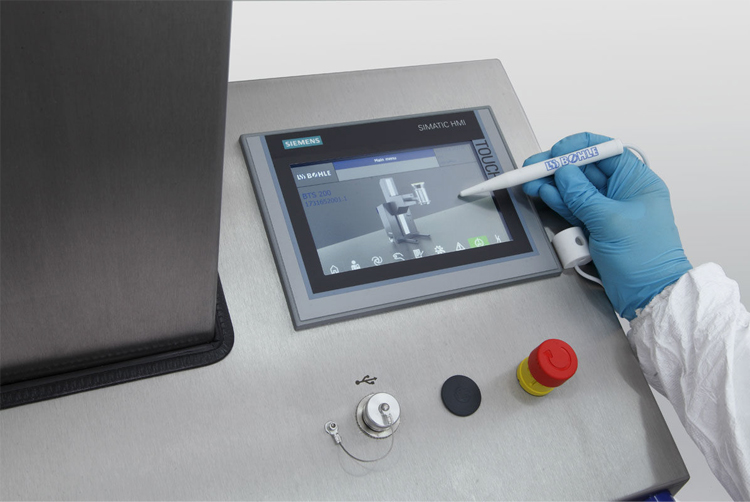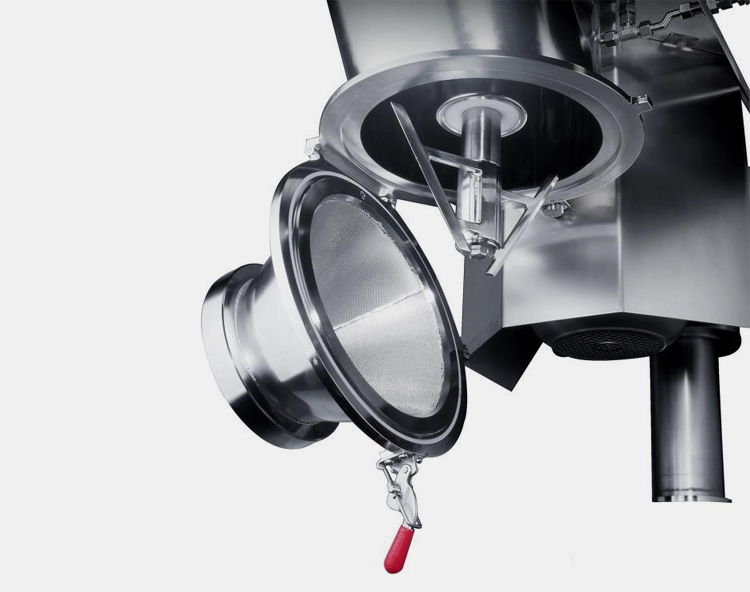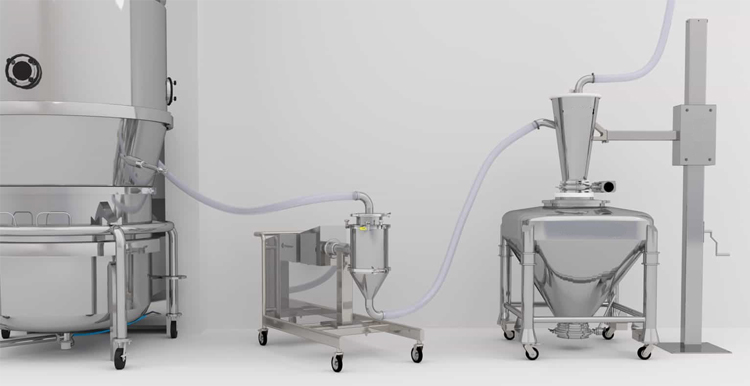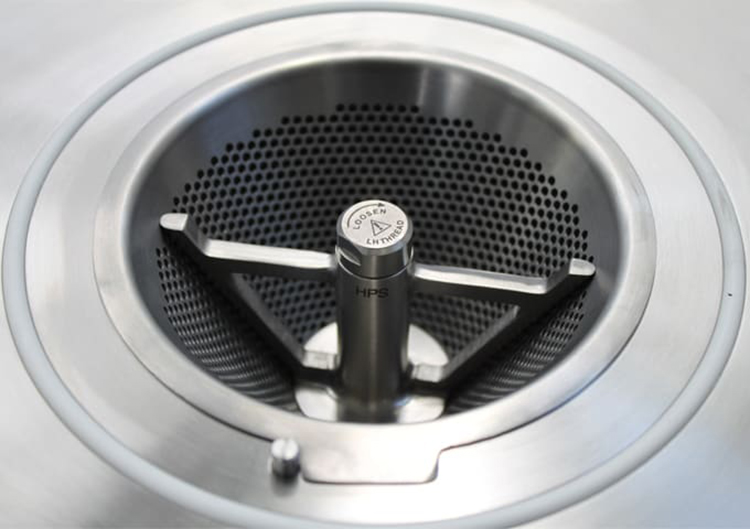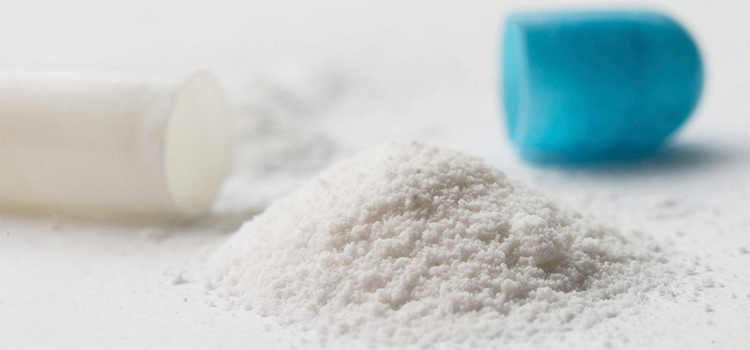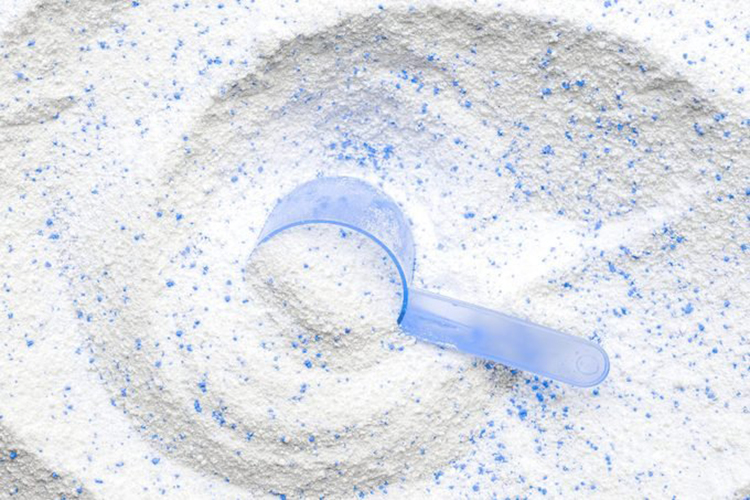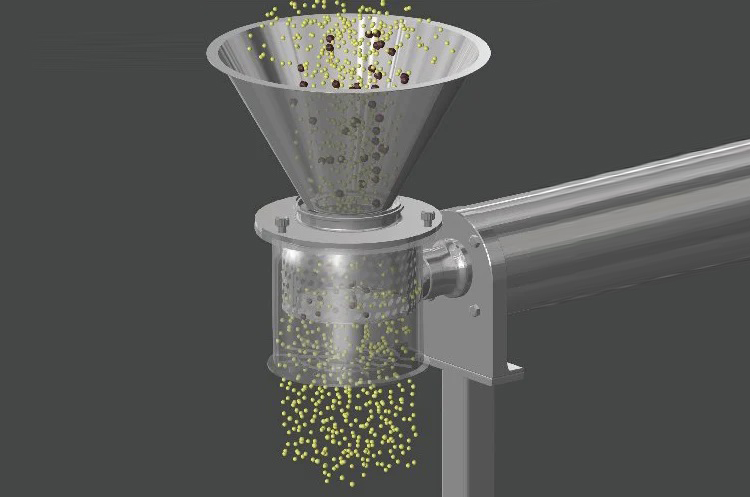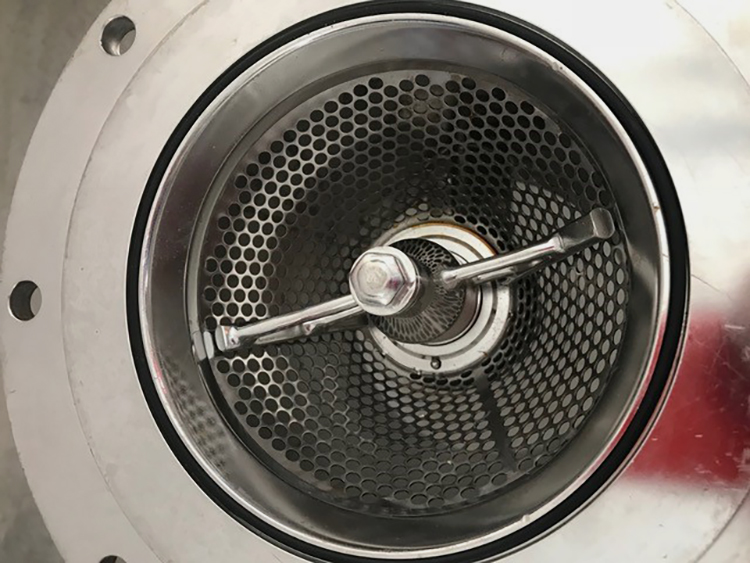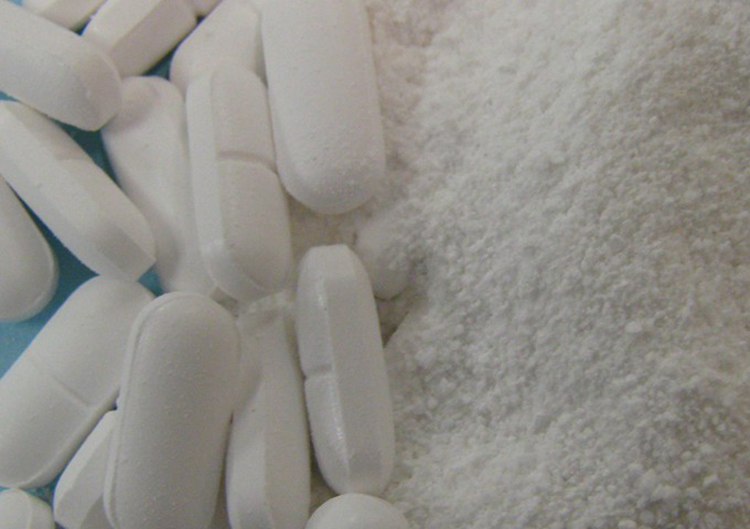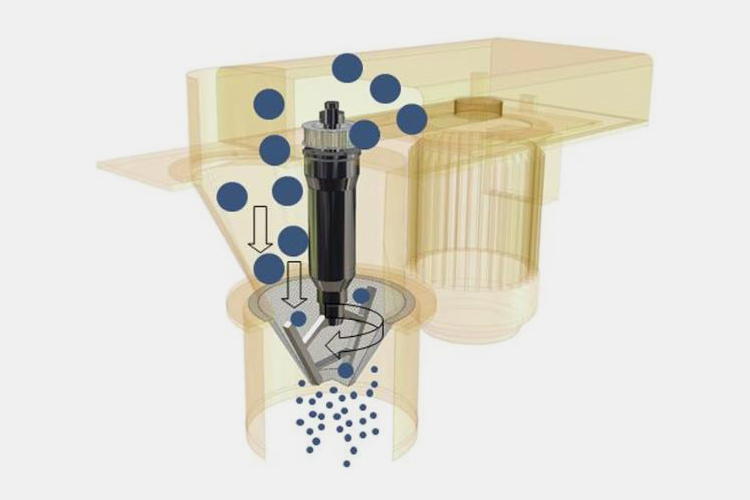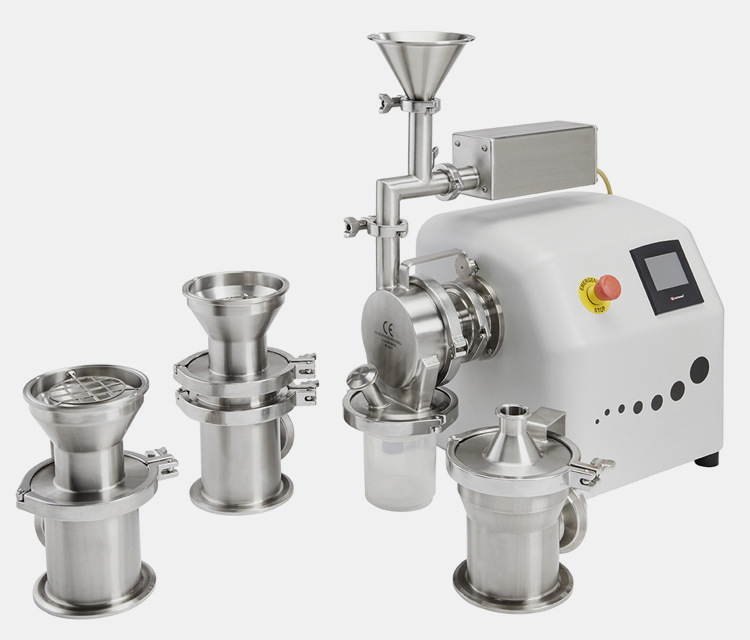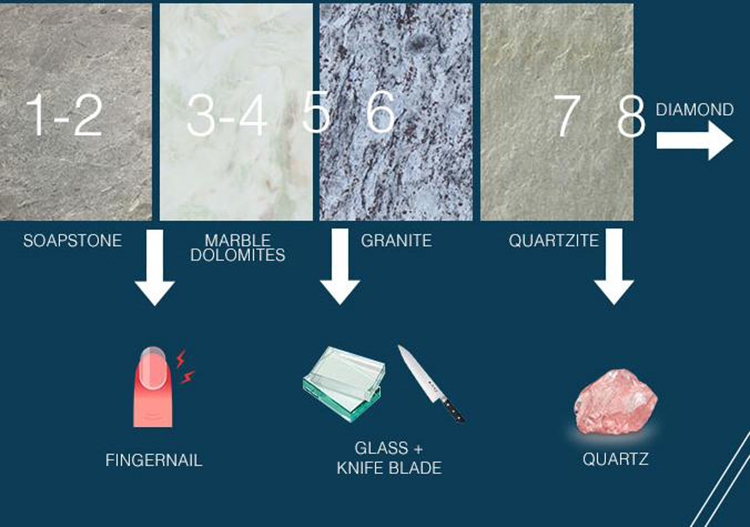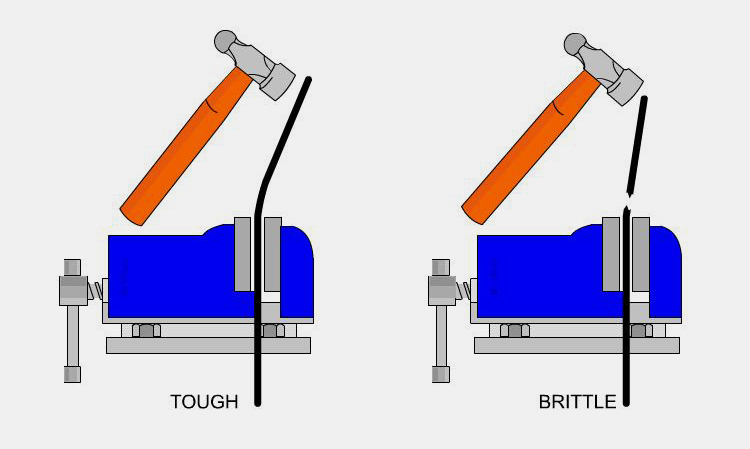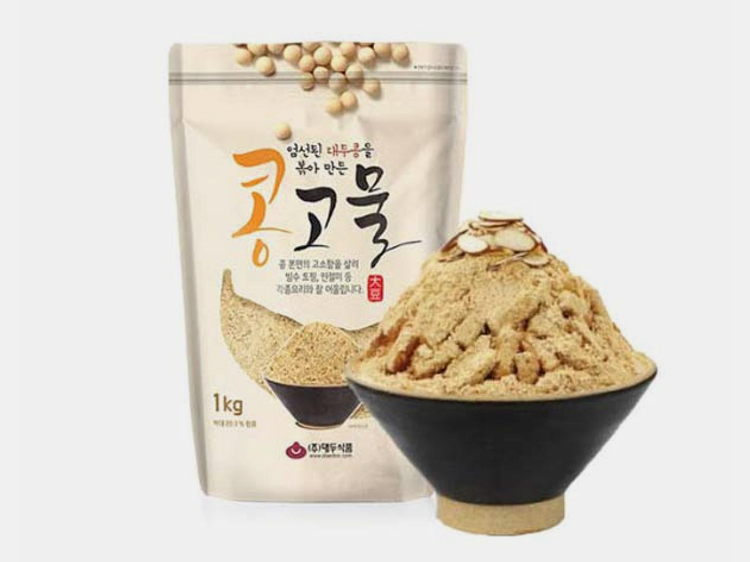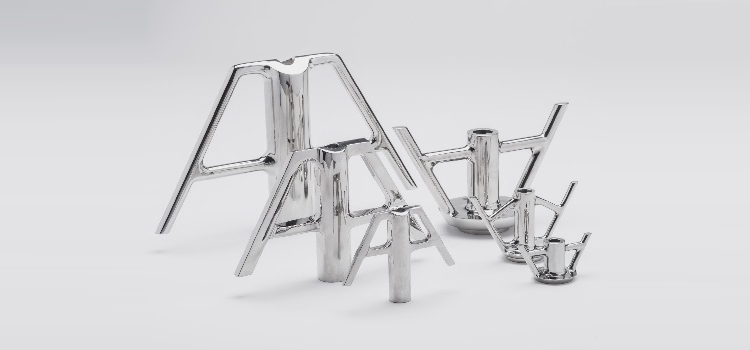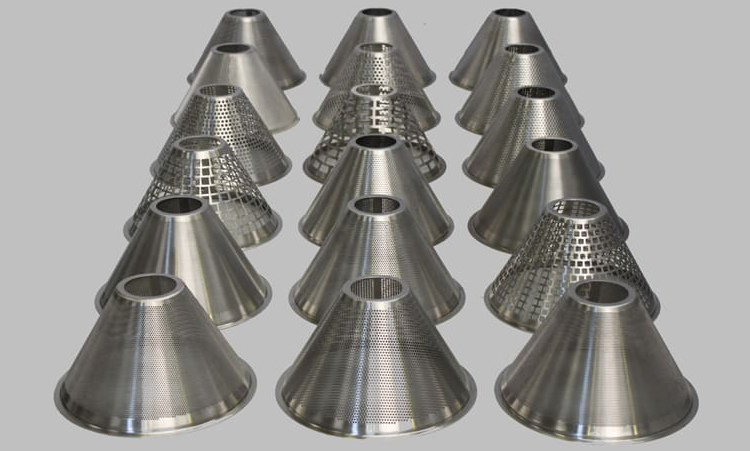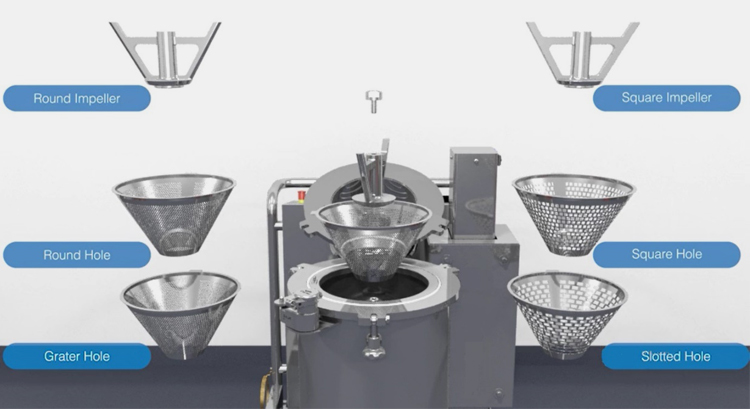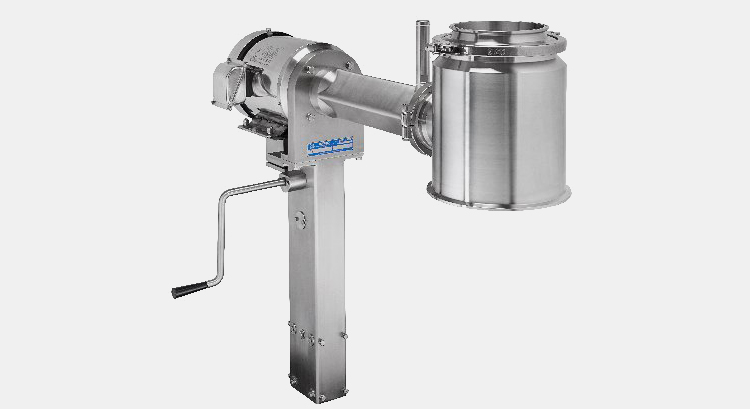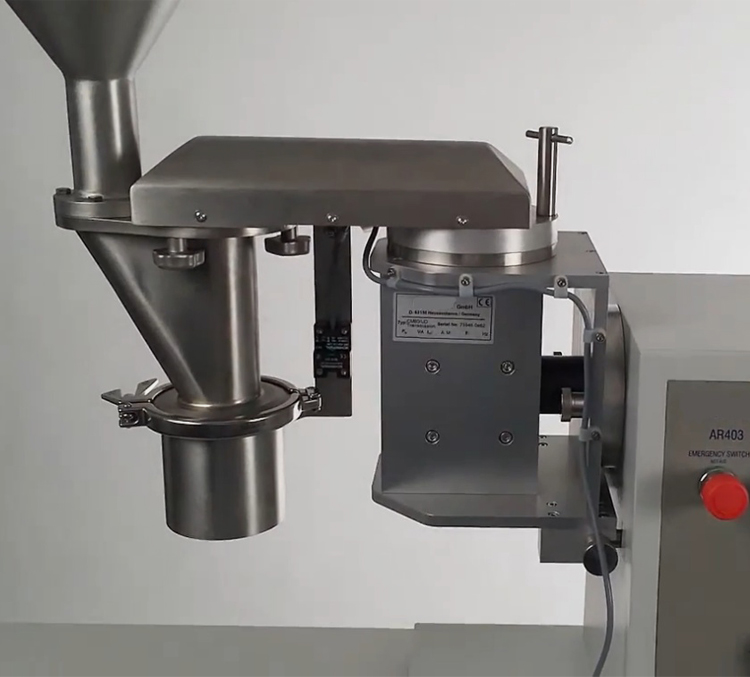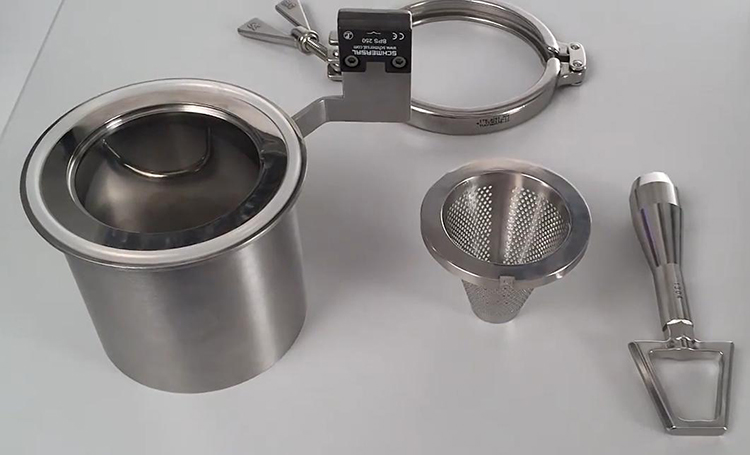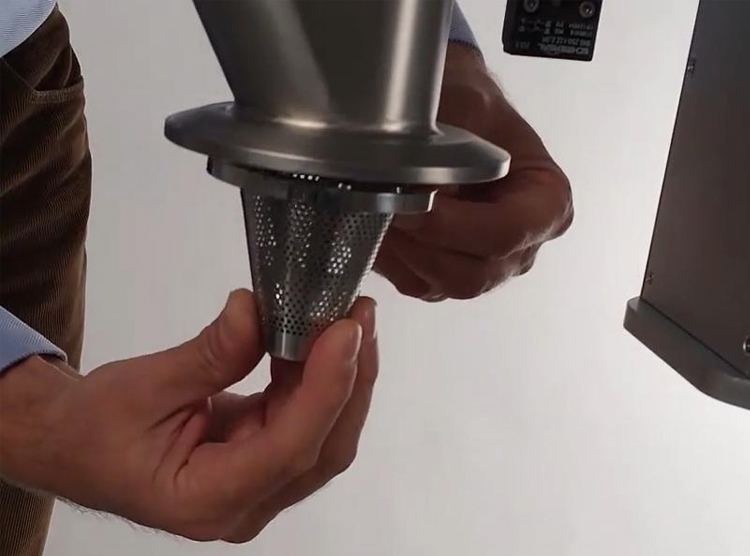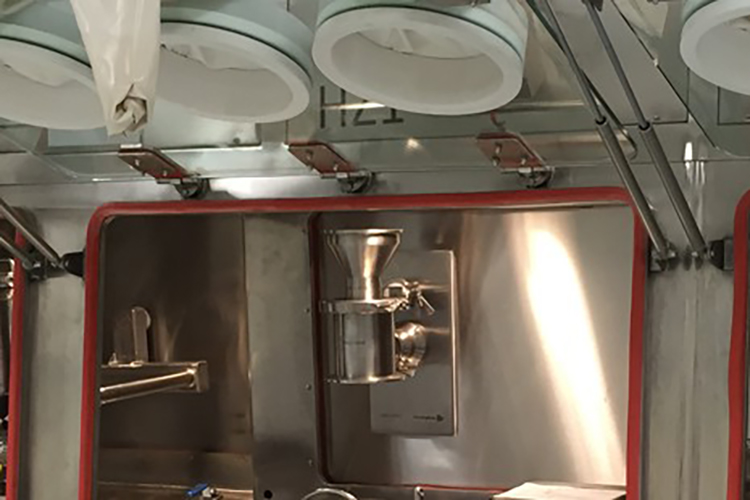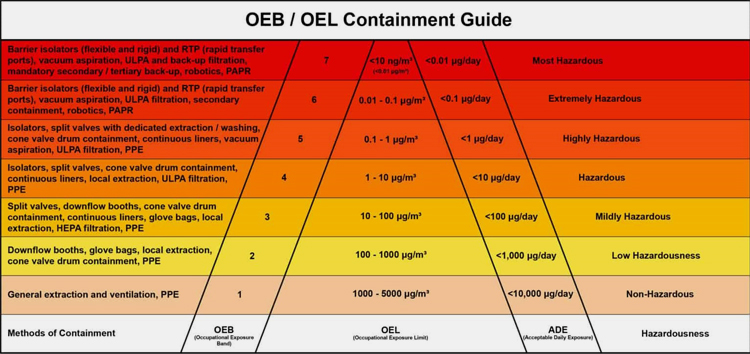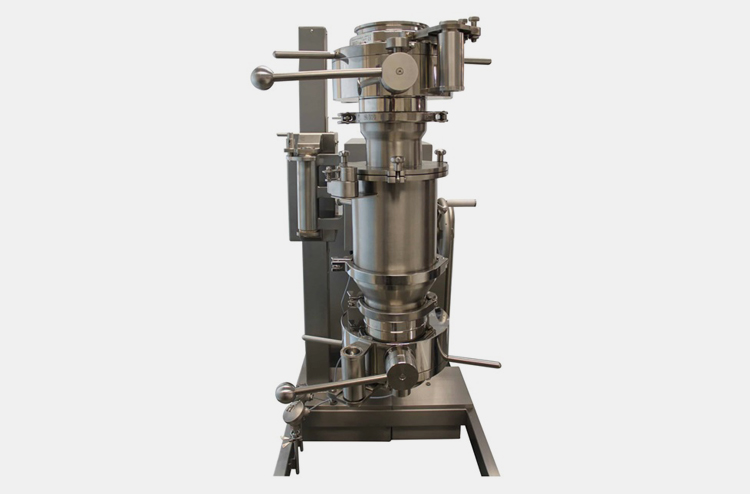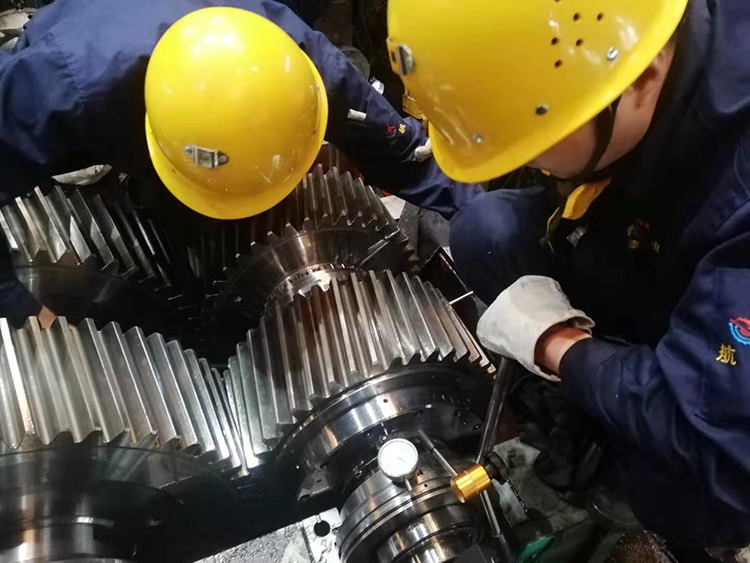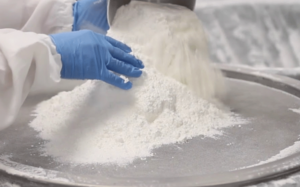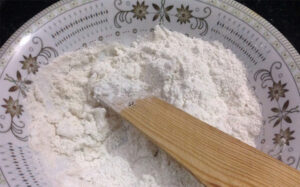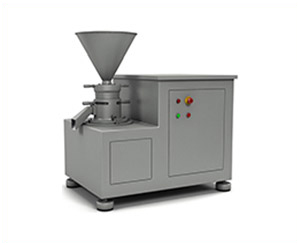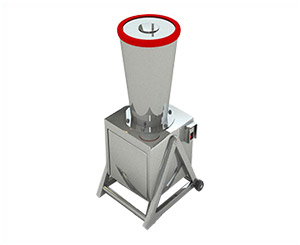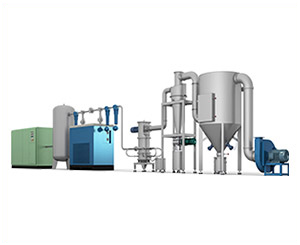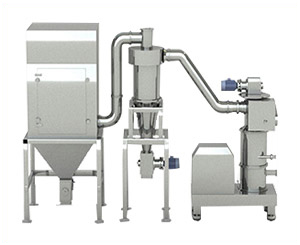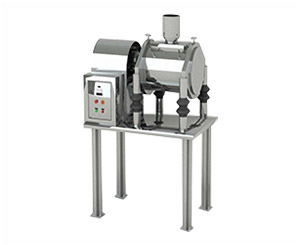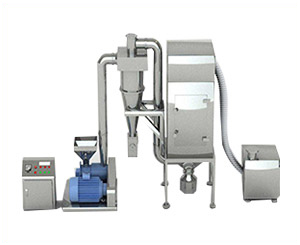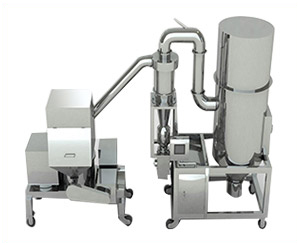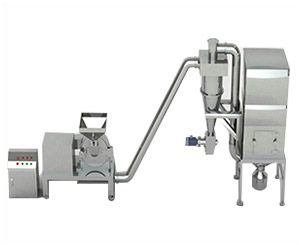Conical Mill:The Complete Buying Guide in 2025
Originally developed in 1976 by Quadro Engineering, pharmaceutical conical mills are now being used in leading manufacturing firms for particle size reduction of pharmaceutical raw materials and semi-finished goods, lumps removal and deagglomeration in chemical and food industry.
Conical mills produce uniform particle size of 4750µ to 250µ through grinding action and produces less dust and heat as compared to other milling equipment making it ideal for processing heat sensitive, fine materials.
Are you interested in buying conical mill, or you want to upgrade your production line or you are preparing resource materials for your assignment; this informative blog will help you in completion of your project. Bringing you “Conical Mill; The Complete Buying Guide in 2022”. In this blog we will cover;
1.What is particle size reduction?
Size reduction is basically mechanical breakdown of larger particles in to smaller ones without changing material’s state. Size reduction is one of the most applied process in food, pharmaceutical and chemical industry in preparation of powders, solid dosage forms and chemicals to produce materials of uniform size.
Particle size reduction leads to increase surface area directly affecting dissolution and compaction properties of materials. Uniform particle size also impedes batch to batch variation.
Size reduction is performed in pharmaceutical industry to increase homogeneity, bioavailability of the active, flow of the materials, reduce segregation and control bulk density and particle size.
2.How can you obtain particle size reduction?
The process of particle size reduction in any equipment is brought about by four basic principles;
Shear or cutting;reduction in particle size because of slicing action of one surface over another. For example, cutting bread slice with a knife.
Attrition;breaking of particles by interaction between themselves and hard surfaces. For example, grinding of powder in mortar and pestle.
Impact;disintegration of material occurs when it is thrown against a stationary object. For example, shattering of glass ball when it is thrown against the wall.
Compression;pulverizing material by crushing between two surfaces. For example, materials crushed by a hydraulic press.
3.How to select milling system that meet your production requirements?
When buying any milling system, you need to first identify your needs, extent of operations and budget. Given below are some variables that are evaluated before purchasing the equipment.
Versatility: From size to shape, bulk density to tapped density, moisture content, temperature sensitivity and grindability/hardness of the material, powder of different physicochemical properties exhibit different characteristics during operations. Machines that can mill different type of powders irrespective of their physicochemical properties is the right choice for a successful operation.
Machine features: An advanced machine having high-tech features guarantees smooth working. Features you need to consider include automation, built in safety measures, variation of speed, capacity, latest technology and human machine interface (HMI).
Cleaning and maintenance: Working life of any machine can be enhanced by regular cleaning and maintenance however, if not properly conducted it can hinder production leading to material and financial losses. Selecting equipment that is sturdy, easy to operate and clean with minimum maintenance can provide halt free operations.
Adaptability: When buying equipment also make a note of its compatibility with auxiliary equipment such that the machine can be used more effectively. These include cooling and dust collecting systems, high shear granulator and forced feeding unit.
Finances: The most important factor that affects the purchase of any equipment is of course the price of the machine. As the machine advances in technology so does its price. Do remember, an equipment can cost you in terms of, labor cost incurred during operations, costly maintenance and space occupied.
4.What are the industries that employ conical mill?
Industrial cone mills are versatile machines having uses in almost every industry. Some important applications of these machines are penned below:
Pharmaceutical Industry
Cone mills are integral component of every type of pharmaceutical industry. These are used for decreasing particle size of API’s, injectable powders, enzymes, and sugars.
These mills uniformly size ingredients for forming tablets and capsules. Cone mills dexterously de-lump agglomerates into even sized powders.
Food Industry
In food industry, conical mills are employed in manufacturing various kinds of breakfast food items like cereals, dairy products and spices. These equipment manufacture powdery flake such as chilies, and adjust bulk density of dairy goods.
These mills also uniformly blend fats, pigments, flavors, and powderize granola bars, chips, candies and cookies.
Chemical Industry
Cone mills are used for milling of chemicals like uranium dioxide, citric acid, mineral salt, and dyes. These machines are imperative in wet blending of detergents and deagglomeration of metal slabs.
These mills increase the solubility of chemical ingredients by increasing their surface area and mills the lumps of crystalline substances.
Cosmetic Industry
Industrial cone mills are also applied in the cosmetic industry to fabricate wide variety of aesthetic products like foundations, blushes, and eye shadows.
These mills have a role in homogenous mixing, sizing and delumping of binders, pearls and coloring agents for manufacturing of compact powders, highlighters, gels, and concealers.
5.Differences between conical mill and hammer mill.
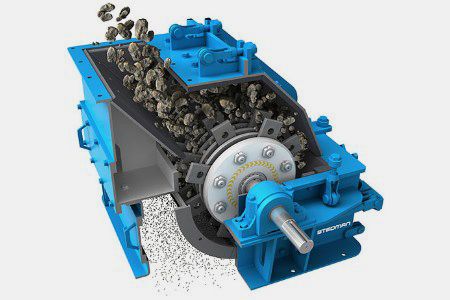 |
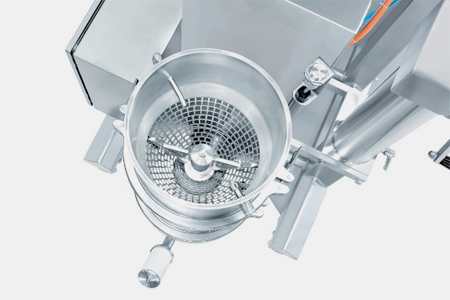 |
| Hammer Mill | Conical mill |
|
|
6.Application of conical mill in pre-formulation processes.
Conical mill has a wide range of application in both pharmaceutical and chemical industry. It is mainly used for;
Particle size reduction: Conical mill produces tight particle size distribution (PSD) without generating heat thereby reducing material loss. That is why it is the most preferred milling equipment in pharmaceutical industry where potent heat sensitive API’s manufacturing require strict procedures. A typical conical mil can produce tight PSD in the range of 4750µ to 250µ.
Deagglomeration: High moisture content in materials leads to clumping, clustering and agglomeration. Conical mill is used to break clumps and agglomerates formed in detergent and dried fruits without unwanted size reduction.
Sieving and screening: Conical mill can be equipped with sieves of different sizes; producing a wide range of particle size. A screen also prevents mixing of unwanted substances with the intended material.
Reclaiming batches: Batches sometimes do not meet the required specifications. They are reclaimed by milling the product back into powder and reformulated again.
Sizing: One common application of conical mill in tableting process is sizing after wet granulation to increase surface area for proper drying and after dry granulation to facilitate tableting.
7.What is the working principle of conical mill?
Sizing in conical mill is carried out in four simple steps;
| 1.Powder for size reduction is introduced in the conical mill. Powder comes in contact with the vortex flow created by impeller. | 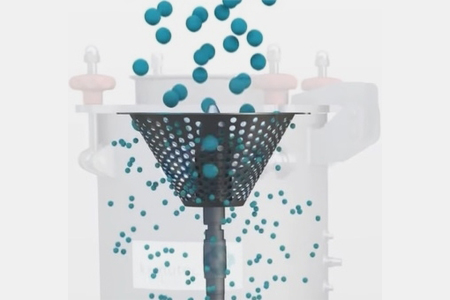 |
| 2.Due to centrifugal force the powder is displaced towards the screen. | 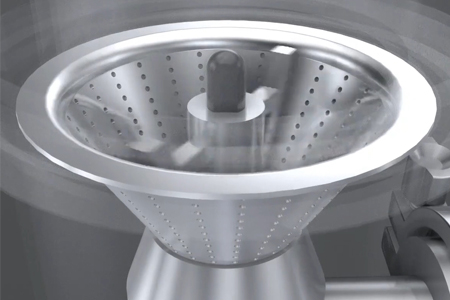 |
| 3.The powder is uniformly sized when it passes through the screen that acts a sieve. | 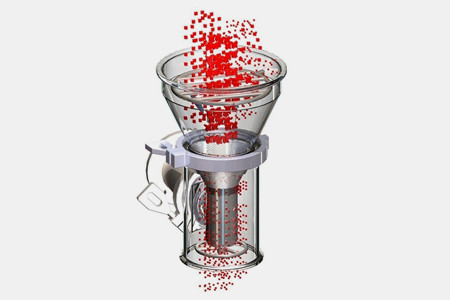 |
| 4.Powder of desired particle size is collected at the bottom of the conical mill. | 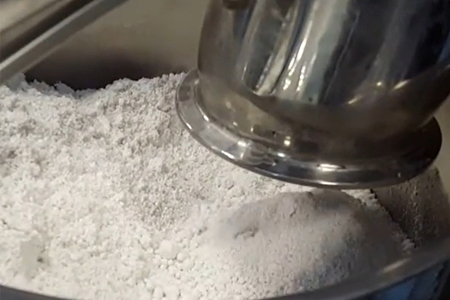 |
8.Factors that affect particle size in conical mill.
Factors that affect particle size in a conical mill depend upon on physicochemical properties of the material as well as machines configuration. All these aspects also influence selection of mills. These include;
Hardness of material
Hard materials are difficult to mill in conical mill. Particle size reduction of such materials are first carried out in other milling equipment such as hammer mill before treating in a conical mill.
Toughness
One of the properties that affect size reduction is toughness of the material. A tough but soft material such as plastic may prove to be difficult to mill than a hard but brittle material such as chalk powder.
Sticky Material
Sticky materials tend to adhere to the impeller and pores of the screens thereby reducing the ability of the mill to effectively carry out milling process.
Moisture content
Moisture contents of powders dynamically affect not only physiochemical properties such as hardness, toughness, viscosity etc. but also their PSD. For dry milling less than 5% moisture is required whereas for wet milling more than 50% moisture contents are required for effective milling.
Impeller shape and speed
When milling impeller design and speed greatly affects the PSD of the product. An impeller with round cross section will impart low shear on the product. Also increased impeller size will reduce particle size except for fines.
Screen size
As a rule of thumb an increase in screen pores size will definitely increase the particle size of the powder.
9.A comparison between over driven and under driven conical mill.
First ever conical mill developed by Quadro in 1976 was an over driven conical mill. Later in the 1990’s Quadro developed under driven conical mill which revolutionized the industry. A comparison of both mills is given below;
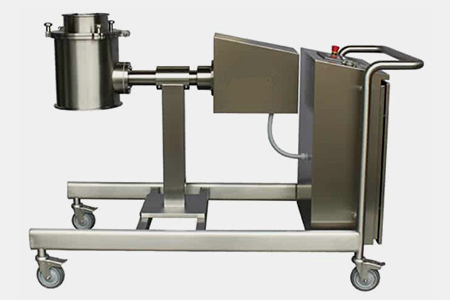 |
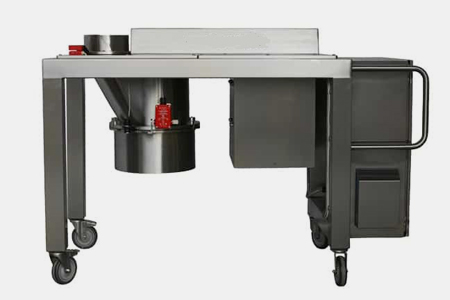 |
| Under driven conical mill | Over driven conical mill |
|
|
10.Features of conical mill; a brief overview.
Sleek and compact style: enables installation in space limited production sites.
Capacity: Two times more capacity than conventional equipment due to large infeed diameter.
Design that enhances performance: Optimum gap between impeller and screen provides superior milling performance than other machines.
Easy sale-up: This machine is designed to meet your current requirements if you increase your working in the near future conical mill can easily be upgraded to meet your working demands.
Perfect solution: Conical machine produces low shear, less heat and tight PSD making it highly sought-after equipment for high potency pharmaceutical API’s.
Easy cleaning: This equipment is easy to assemble and dismantle making cleaning easy and time saving. It can also be equipped with CIP unit and other sanitary connections enabling it to be cleaned automatically with just push of a button.
Low maintenance: As per manufacturer’s recommendation maintenance is conducted on quarterly and annual basis reducing cost incurred.
Fast changeover: It can be conducted in a quick session without any special tools for changing impellers and screens.
Customization: Machine can be customized according to your demands i.e. whatever your process conditions this machine can be put together to give you smooth operations.
Safety features: GMP approved machine, having advanced safety features meeting local and international regulatory requirements.
Stainless steel body: Main body and other parts that come in direct contact with the product is made up of Stainless steel. Mill head can easily be detached for autoclave to prevent microbial contamination.
11.Major components of conical machine.
Futuristic yet designed for fast change over, cleaning and maintenance you will find following components/parts in every standard conical mill.
| UNIT/PART | DESCRIPTION | PICTURE |
| Machine mill head | Made up of stainless steel mill head holds impeller and screen and conduct powder sizing. | 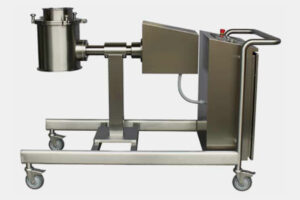 |
| Control panel | Available in PLC push button panel and advance HMI touch screen. | 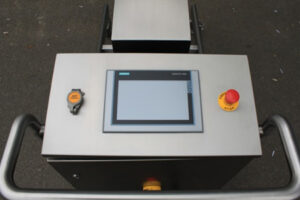 |
| Machine drive unit | Machine can be belt driven as in the case of over driven conical mill or gear box driven as in case of under driven conical mill. | 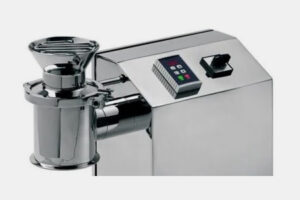 |
| Screens | For tight particle size distribution between 4750µ to 250µ, screens having holes of different sizes and shapes are available. Some manufacturer also provide customized screens as per customer’s request. | 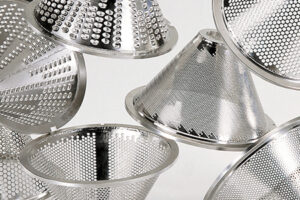 |
| Impellers | Mostly two blades or three blades, a wide range is available for particle sizing. Different shapes of arms include round bar, square bar etc. | 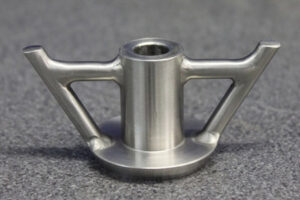 |
| Main frame | Made up of stainless steel main frames are available either as fixed bases or maneuverable units with handles for ease of mobility. | 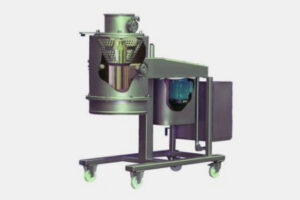 |
12.What are benefits of a standard conical mill?
Conical mill has a number of benefits over conventional milling systems. These include;
- Different range of particle size reduction just by changing screen and impeller.
- Low noise, low maintenance, low heat and less fine make this machine ideal for API’s manufacturers and pharmaceuticals.
- Can be scaled up from to cater lab to full-fledged production requirements.
- Can easily be customized as per user need.
- Infeed and discharge unit can be attached to auxiliary systems to contain dust and fines.
- Virtually no batch to batch variations due to optimized and validated processes.
- Can be installed on a bench top, has maneuverability and requires no special installation requirements.
13.Operational hazards of conical mill and how to control them?
The one and only operational hazard unique to any milling equipment is airborne dust particles that are produced during operations. Given the nature of materials these dust particles can produce health and environmental concerns.
With the development of potent API’s and stringent regulatory requirements, personnel and environment protection against milling dust has become mandatory for all operations. Following strategies should be employed and developed to minimize exposure;
- Development of containment strategies for personnel and environment protection as well as rapid combustion of materials.
- Determining operator exposure level (OEL) of the materials
- Employing operator exposure band (OEB).
- For small scale production and mild hazardous materials containment of inlet and discharge of mill with use PPE’s and respirator is recommended.
- For large scale production use of silicon caps and use of vacuum is recommended for non-hazardous materials dust containment.
- A bin to bin or flex to flex system is recommended for strict containment.
14.How to perform routine maintenance and cleaning of your machine?
Cleaning and maintenance are essential for healthy operational life of the mills. Some maintenance and cleaning tips are discussed below:
Cleaning
Cleaning of various parts and their use is given below in table.
| Part | Cleaning Agent | Use |
| Impeller and chopper Blade | Teflon spatula and lint-free cloth | For clearing debris, dust and residues |
| Screens, mixer bowls and hoppers | 20 liter water 2% non-ionic detergent solution |
For rinsing and removing adhered substances |
| External parts | Tap water 50 liter purified water |
Washing |
Precaution
- Before cleaning, cover the motor of cone mills with polyethene covering.
- Use screwdriver for dismantling various parts like screen, impellers, and conical hoppers.
- Air dry and wipe all the parts with lint-free cloth before reassembling them.
Maintenance
| Process | Schedule | Purpose |
| Lubricate the moving joints | Daily | Avoiding buildup of friction. |
| Oiling of blades and granulators | Daily | Smooth rotation |
| Monitor temperature | Daily | Ensures optimal low temperature for working |
| Check exhaust pipes | Weekly | Maintains proper ventilation |
| Conduct inspection of conical mills | Monthly | Replacing worn-out parts. |
15.Can you customize your machine?
Based on you process requirements various changes can be made to standard version of conical mill. These include:
- Frame mount is available in swing arm, fixed post and mobile trolley.
- Machine can be customized to fit any collecting unit and process.
- A range of options for infeed and discharge unit including vacuum adaptors, hand feed, containment split valves etc.
- This machine can be ordered with nitrogen purge unit, CIP unit and adapter kit for easy removal of milling head for autoclave.
- A temperature monitor gauge can also be incorporated to monitor working temperature in the milling head to avoid product degradation due to heat.
Conclusion
Hope you enjoyed this blog. If you have further queries contact our 24/7 customer care. Aipak engineering expertise lies in providing customized solution to the end user. Whatever your process requirements are they can be managed by our expert panel. We can easily build porotypes specially to cater your need. Contact us today.
Don't forget to share this post!
Crusher Machine Related Products
Crusher Machine Related Videos
CONTACT US
Tell us your raw material and project budget to get quotations within 24 hours.
WhatsApp Us: +86 181 6426 8586
Want the best price & newest pharmaceutical machinery buying guide,tips and trends sent straightly to your box?Sign up for Aipak’s monthly newsletter,we’re free for your consultation and Offer you the most suitable solutions!
The Buyer's Guide
- Capsule Filling Buyer's Guide
- Blister Packaging Buyer's Guide
- Tablet Counting Buyer's Guide
- Tube Filling Buyer's Guide
- Cartoning Buyer's Guide
- Gummy Making Buyer's Guide
- CO2 Extraction Buyer's Guide
- Empty Capsules Buyer's Guide
- Suppository Filling Buyer's Guide
- Tablet Coating Buyer's Guide
- Tablet Press Buyer's Guide
- Softgel Encapsulation Buyer's Guide
Most Popular
- 7 Importance Of Pharmaceutical Packaging In Different Applications You Must Know
- 6 Advantages You Must Know About Tablet Counting Machine
- 8 Advantages of Blister Packaging You Must Know
- 6 Critical Applications of Automatic Capsule Filling Machine
- 6 Stations You must Know to Improve the Filling Quality of Automatic Capsule Filling Machine
